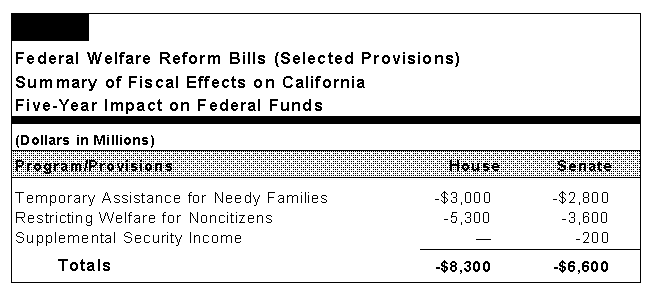

Summary
In March 1995, the House of Representatives passed H.R. 4--the Personal Responsibility Act (PRA) of 1995. In August 1995, Senate Majority Leader Bob Dole introduced S. 1120--the Work Opportunity Act of 1995. Both measures would make extensive changes to public assistance programs and replace them with block grants.
This policy brief compares the potential fiscal impacts on California of selected provisions in the House and Senate welfare reform proposals. We conclude that:
Although both House and Senate welfare reform proposals make changes in many policy areas (such as food stamps, child support, and job training), our analysis is limited to three major areas: AFDC, Supplemental Security Income (SSI), and restrictions on welfare for noncitizens. Our analysis of S. 1120 includes amendments to that measure as proposed by Senator Dole on August 11, 1995, which have not yet been incorporated into the bill.
While the reform proposals are similar in many respects, there are major differences which can be summarized as follows:
Figure 1 summarizes the effect of the selected House and Senate welfare reform provisions on federal funds allocated to California. It shows that for the House version, the net fiscal effect is estimated to be a reduction of $8.3 billion in federal funds over the first five years. For the Senate version, the five year loss is estimated to be $6.6 billion. (We note that the fiscal effects of the House version, previously presented in our Policy Brief of April 25, 1995, have been updated to reflect changes in current law and revised estimates.)

Figure 2 summarizes the major fiscal effects of the proposals on state/county funds. As shown, the net effect depends on several variables, the most significant being:
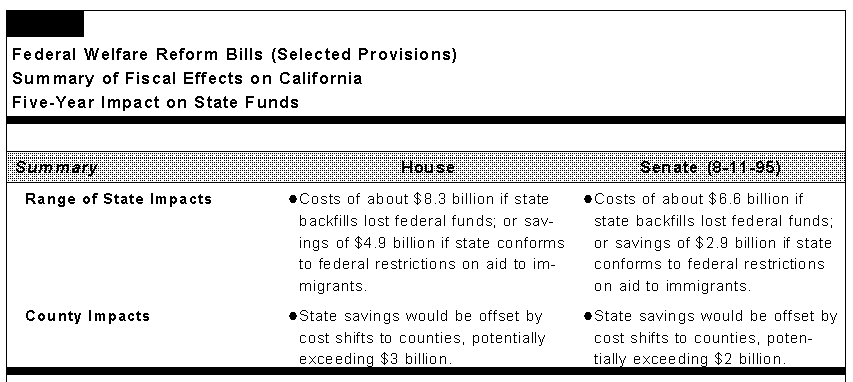
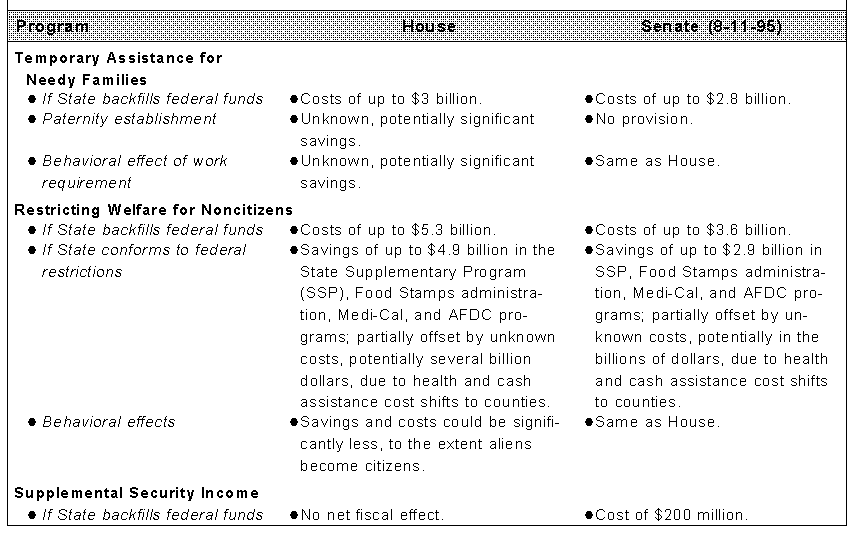
Given these variables, the fiscal effect over five years on state/county funds could range from a cost of about $8.3 billion in the House version ($6.6 billion in the Senate version), to a savings of roughly $2 billion in the House version (roughly $1 billion in the Senate version). The costs would occur if the state chooses to backfill for the reduction in federal funds in order to maintain current service levels. The savings could result if the state does not backfill and conforms its policy to federal restrictions on eligibility of immigrants for federally funded pro grams.
While not included in our estimate of fiscal effects, we note that the proposals would effectively eliminate federal requirements that states provide matching funds for certain programs (notably AFDC), thereby permitting the state to operate such programs only with federal block grant funds. (The Senate version, however, includes a two-year maintenance of effort requirement on state spending for AFDC.) Viewed in this perspective, the reform proposals would have a potential additional state savings of over $3 billion annually, provided the state chose to reduce service levels accordingly. Much of these savings, however, could be offset by costs at both the state and local levels for general assistance and services such as indigent health care.
We also note that our analysis includes only the major direct fiscal effects of the proposals. Thus, some fiscal effects--such as potential state administrative savings (which would not be major compared to other fiscal effects identified) and the potentially significant indirect revenue losses that the state would experience as a result of the economic impact of the loss of federal funds--are not included.
It is clear that the Legislature will need to consider making a number of changes to state law if federal welfare reform legislation is enacted. However, the relatively modest fiscal impacts projected for 1995-96 suggest that immediate legisla tive action would not be necessary, at least for the provisions covered in this analysis.
Title I in both the House and Senate versions eliminates all existing federal requirements in the Aid to Families with Dependent Children (AFDC) Program, the Job Opportunities and Basic Skills Program (the GAIN Program in California), and the Emergency Assistance Program, and consolidates federal funding into a Tempo rary Assistance for Needy Families Block Grant.
For both the House and Senate versions, Figure 3 summarizes the major program changes and Figure 4 summarizes the work participation requirements. Figure 5 describes the principal fiscal provisions of each reform proposal. Finally, Figures 6 and 7 summarize the fiscal effect of each version on California.
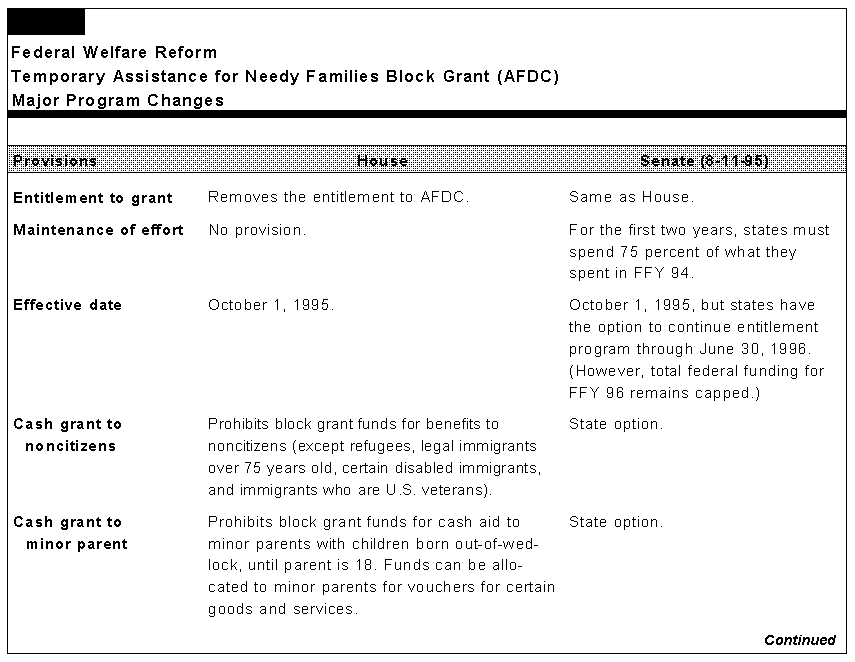
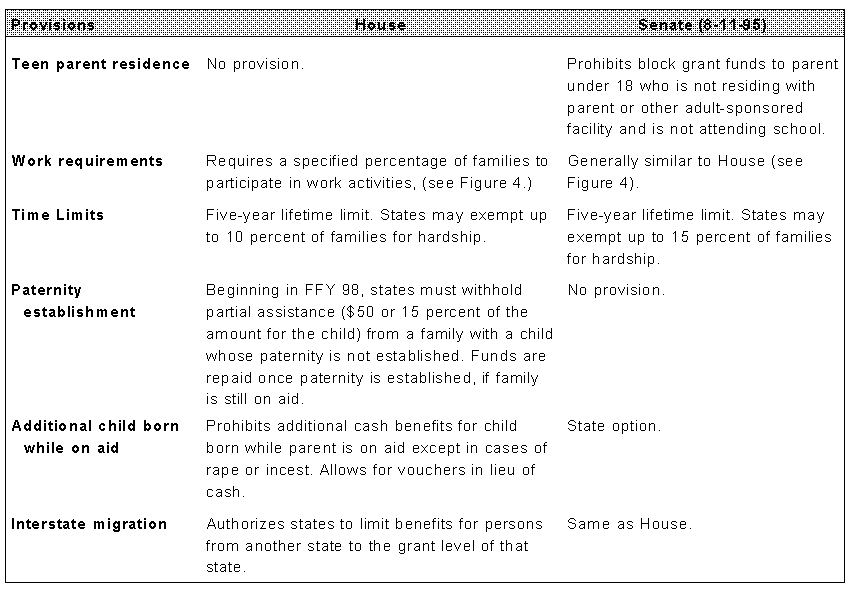
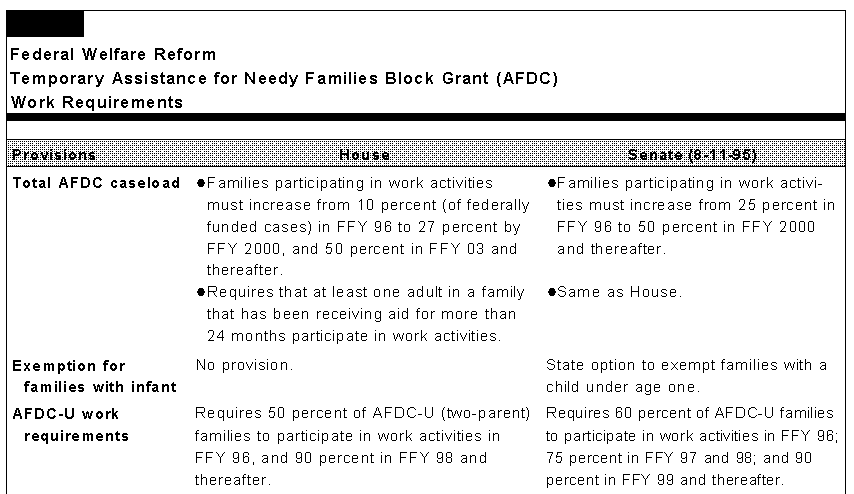
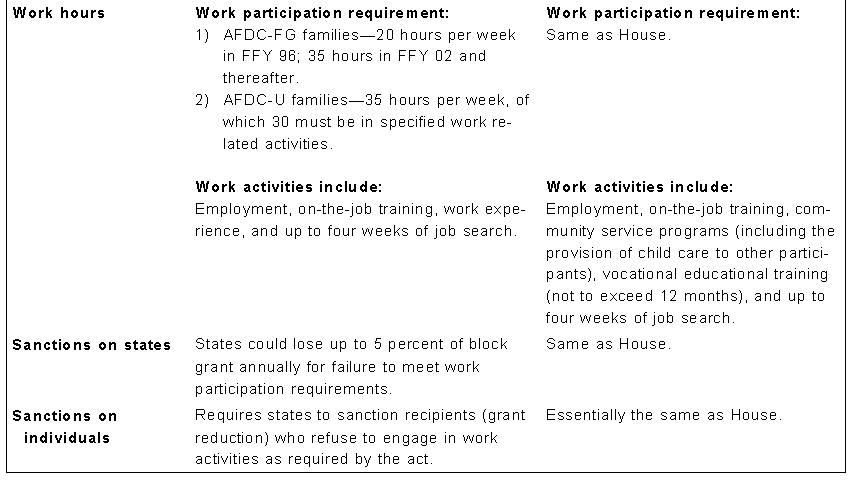
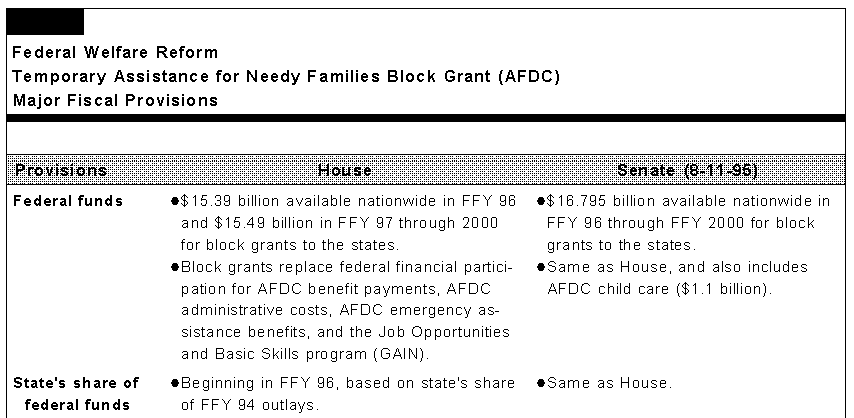


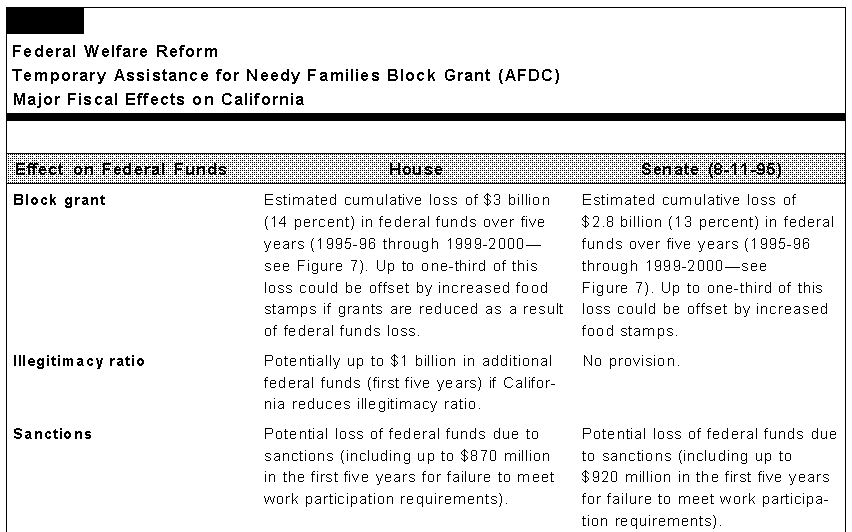
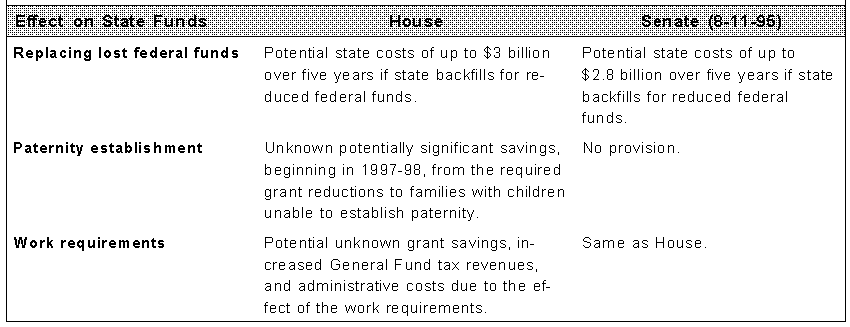
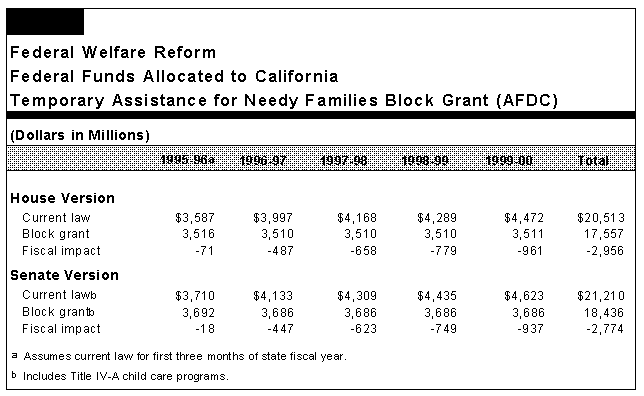
Go to Part II, House and Senate Welfare Reform
Return to Table of Contents, House and Senate Welfare Reform